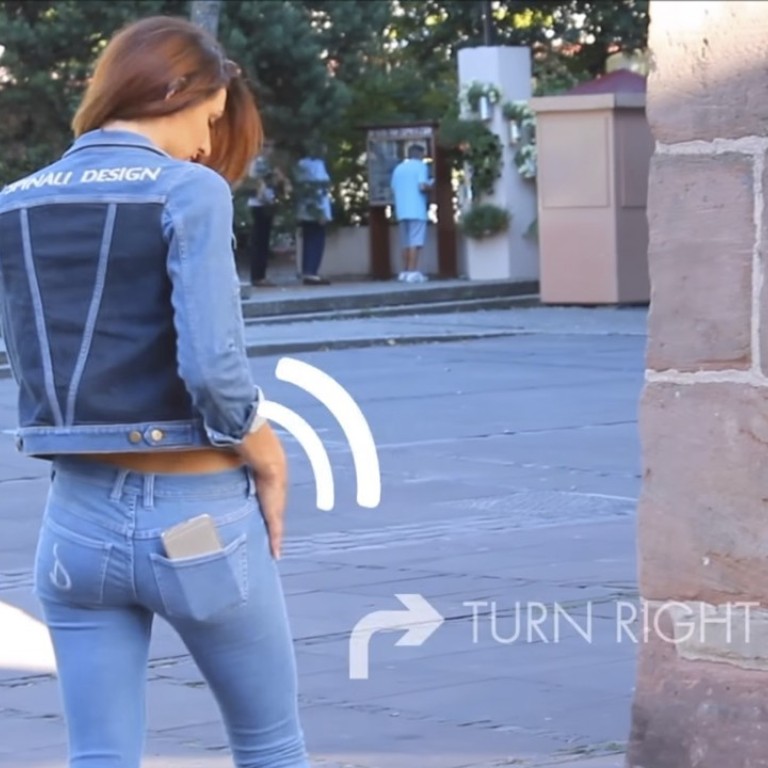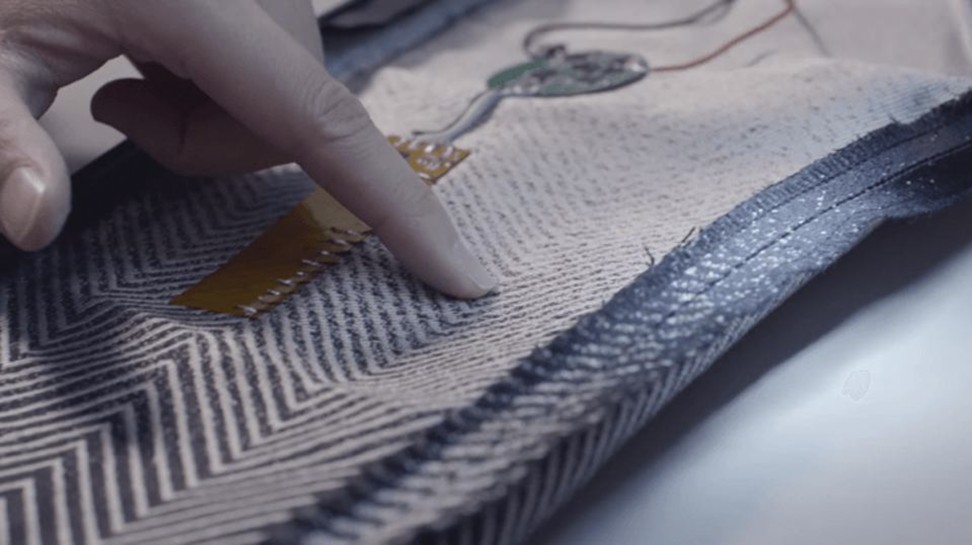
Smart denim with touchable tech keeps you cool and tells you where to go
Denim makers are using technical innovations to make their products ‘smart’, allowing them to give you directions, tell you when to apply sunscreen, and a host of other possibilities
A young man in a white T-shirt pulls on a dark blue denim trucker jacket, tucks his smartphone in an inside pocket and puts an earphone in his right ear. Riding through the streets of San Francisco on a bike, he occasionally taps or swipes his right hand over the left cuff of his jacket, as the directions he’s listening to continually pop up on the screen of this advertisement.

The future of the popular fabric was the focus at a recent international fashion fair in Paris – after all most believe the word denim derives from the French “serge de Nimes”, a serge from the city of Nimes.
The fair featured many wearable innovations such as a waterproof jacket with sunscreen bands and a cable in the pocket to recharge a phone, or jeans that keep your body temperature stable.
Once mainly the purview of athletic gear – with moisture-wicking shirts and trousers and then clothing that can track motion, heart rate, and body temperature – the new trend for fashion designers is to take everyday wear and transform it using new technologies.
French-based fashion company Spinali Design, for example, has created jeans that can give wearers directions without them having to whip out a mobile phone at every single junction.
Through Bluetooth sensors stitched into the jeans’ waistband, the smart phone stays out of sight.
“You put a destination into the app (and) sensors will vibrate right if you need to turn right, left if you need to turn left,” says Spinal innovation director Romain Spinal.
The Spinali jeans cost €150 (HK$1,278) and also have e-mail notification capabilities.
“They will vibrate differently depending on whether the message received is from your family, your friends or work, in a way that you won’t have to constantly check your e-mail on weekends or on vacation,” says Spinal.
In 2015, the company from the eastern French town of Mulhouse designed a bikini that tells women when it’s time to apply more sunscreen.

On their end, Google and Levi expect to release their denim jacket sometime this year, but it will come with a hefty US$350 price tag, due in part to its special interactive fabric that allows the wearer to order various products online.
Using thermo-regulated fabric and microfibre cloth popular in athletic wear, Brazilian textile-maker Vicugna Textile has designed denims that will keep the wearer’s temperature stable.
American designer Cone Denim for its part has blended its denims with technical textile fibres from equipment used on motorcycles – this to better tout the sturdiness of its clothes.
But these companies recognise that there has to be more to “smart” jeans than just fashion sense and connected capabilities and that means making sure they are environmentally friendly.
“The consumer demands greater traceability and ecology, especially when it comes to denim because it is a product that is a bit controversial,” says Marion Foret, fashion products chief for Premiere Vision Paris, which organises trade shows for the textile and clothing sector, including the denim show.
Denim is a product “that doesn’t always carry the best reputation, so textile makers are forced to use more ecological processes,” says Foret, such as making denims with organic or traceable cotton, cleaning denims without water, and using dyes that won’t pollute the land.
In keeping with that trend, Dutch fashion designer Pauline van Dongen makes denims using fabrics from used and already worn jeans.
Others seek to keep consumers better informed like Pakistani manufacturer Artistic Fabric Mills which developed an application to retrace the history of the jeans.
But for some young fashion students the future of jeans is not all about technology.
“Connecting jeans to a smartphone is not necessarily what we want to have,” said Aurelia Martin, who studies fashion in Brussels.
“There are problems that are a little more essential in terms of production, the dye, the cotton, the [jeans’] pretty weak longevity, and the quality.”

.png?itok=arIb17P0)